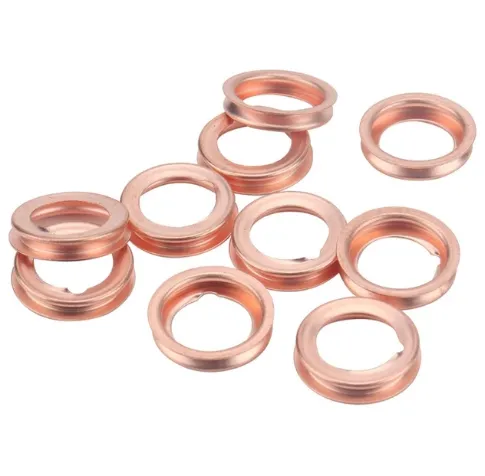Simplifying Oil Changes: A Comprehensive Guide to Oil Drain Plugs and Their Variants
Oil drain plugs may seem like a minor component of an engine, but they play a critical role in routine maintenance and long-term vehicle performance. These plugs are responsible for sealing the oil pan, and when removed, allow for the draining of old engine oil during oil changes. With technological improvements and user demands for convenience, several types of oil drain plugs have emerged—ranging from traditional designs to innovative self-tapping and quick drain oil plug systems.

Traditional Oil Plug vs. Modern Options
The standard oil plug is a threaded bolt—usually made of steel or aluminum—that fits snugly into the oil pan. It’s removed during oil changes and must be reinstalled properly to prevent leaks. While this simple design has served vehicles for decades, it does come with limitations. Over-tightening can strip threads, and repeated use can lead to wear and oil seepage.
To address these drawbacks, manufacturers have developed alternatives:
Quick drain oil plugs are engineered to simplify oil changes by allowing users to drain oil without tools. These systems typically involve a lever or valve mechanism that, when activated, releases oil from the engine safely and efficiently. Some models come with hose attachments to prevent spills and direct oil into a container, making them popular in garages and among frequent oil changers.
Universal oil drain plugs offer compatibility across multiple vehicle makes and models. These are especially useful for mechanics or businesses servicing a wide variety of vehicles, as one plug can serve several engine types. Often designed with adjustable threads or compression seals, universal plugs offer flexibility but must still be installed carefully to ensure proper sealing.
Self-tapping oil drain plugs are designed for repairing damaged oil pan threads. These plugs cut new threads as they are screwed into place, making them ideal for emergency repairs or restoring stripped plug holes. Though not a long-term solution in every case, they can extend the life of an oil pan and save on costly replacements.
Quick Drain Oil Plugs: Convenience Meets Cleanliness
Among all the types, quick drain oil plugs are rapidly gaining popularity due to their user-friendly design. Instead of using a wrench and risking spills or burns, a quick drain plug allows users to drain oil by turning a valve or lever. This tool-free process speeds up oil changes and significantly reduces the mess involved.
Benefits of quick drain oil plugs include:
Time-saving: Perfect for fleet operations or home users who prefer DIY maintenance.
Clean operation: Minimizes oil spills, reducing cleanup time and environmental impact.
Durability: Often made from high-quality brass or stainless steel to resist corrosion.
Repeat usability: Some models allow you to attach a hose for controlled drainage directly into a container.
These plugs are ideal for anyone looking to streamline their maintenance routine without sacrificing quality or safety. Brands like Fumoto and ValvoMax have built reputations around these products, and their widespread adoption is a testament to their functionality.
Choosing the Right Oil Drain Plug for Your Needs
Selecting the correct oil drain plug depends on your vehicle type, your level of experience with maintenance, and whether you’re looking for a temporary fix or a long-term upgrade.
If you perform regular oil changes and prefer the traditional route, a standard oil plug is sufficient—just ensure it’s made of quality materials and fits your vehicle’s specifications.
For those with damaged threads or minor leaks, a self-tapping oil drain plug can serve as a life-saver. It's best used as a temporary or emergency solution, though some high-quality versions may last longer if installed correctly.
When working on multiple vehicles or in a repair shop, a universal oil drain plug reduces the need for keeping dozens of specific plugs in stock. However, proper torque and sealing are crucial for effectiveness.
For the cleanest, most efficient option, the quick drain oil plug stands out. Its no-tool operation and mess-free oil disposal make it ideal for frequent oil changes or environmentally-conscious users.
Installation Tip: No matter which plug you choose, always check for compatibility with your oil pan and engine specs. Proper torque should be applied to avoid stripping threads, and old gaskets or washers should be replaced to maintain a tight seal.
Oil drain plugs may not be the flashiest part of your vehicle, but choosing the right one can make a significant difference in maintenance efficiency, cost savings, and engine health. Whether you're upgrading to a quick drain oil plug for convenience, using a universal oil drain plug for versatility, or relying on a self-tapping oil drain plug for emergency fixes, understanding your options ensures you can perform safe, clean, and effective oil changes.
As vehicles evolve and maintenance demands grow, investing in better oil drain plug technology is a simple yet impactful way to keep your engine running smoothly—and your hands a little cleaner.
-
Seal 12x20x5: Precision Radial Shaft Seals for Industrial Reliability
اخبار Nov.24,2025
-
Seal 12x18x5: Essential Guide to Specifications, Applications & Vendors
اخبار Nov.24,2025
-
Understanding Seal 12 20 5: Applications, Specifications & Industry Insights
اخبار Nov.23,2025
-
Durable Oil Seal 85x110x12 – Reliable Sealing Solutions for Industry
اخبار Nov.23,2025
-
Durable and Precise Oil Seal 75x95x10 for Efficient Machinery | YJM Seal
اخبار Nov.22,2025
-
Durable Oil Seal 75x100x10 for Reliable Industrial Performance | YJM Seal
اخبار Nov.22,2025
-
High-Quality Oil Seal 65x90x10 | Durable & Reliable Sealing Solutions
اخبار Nov.22,2025
دسته بندی محصولات















